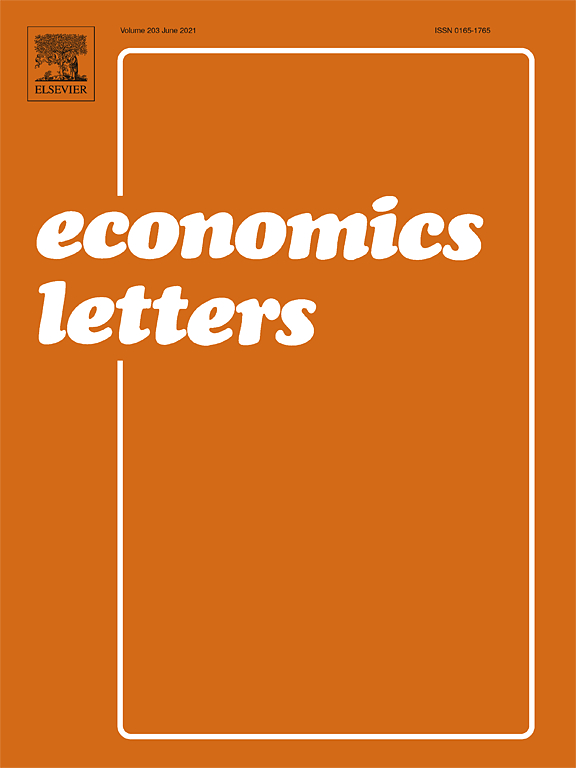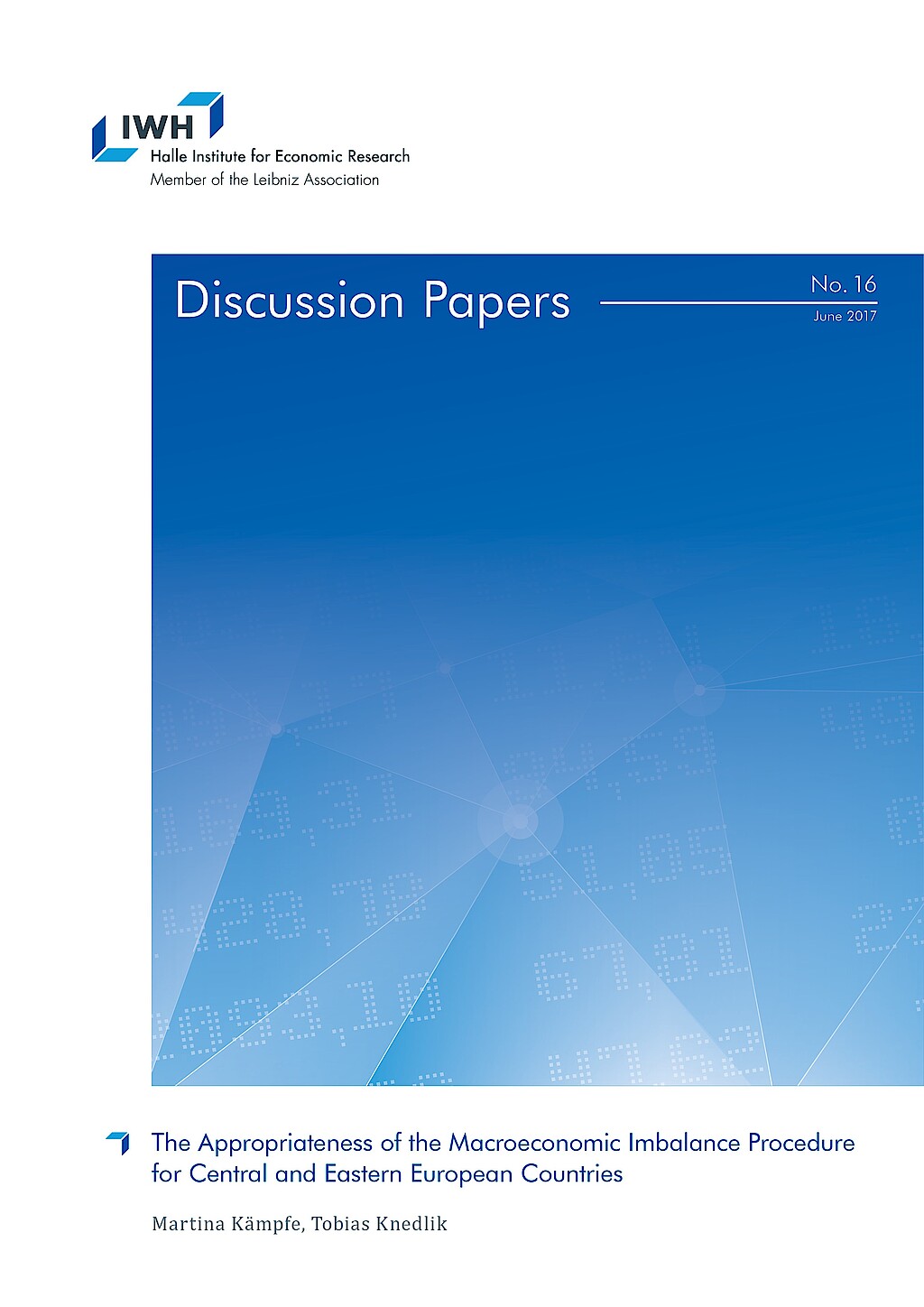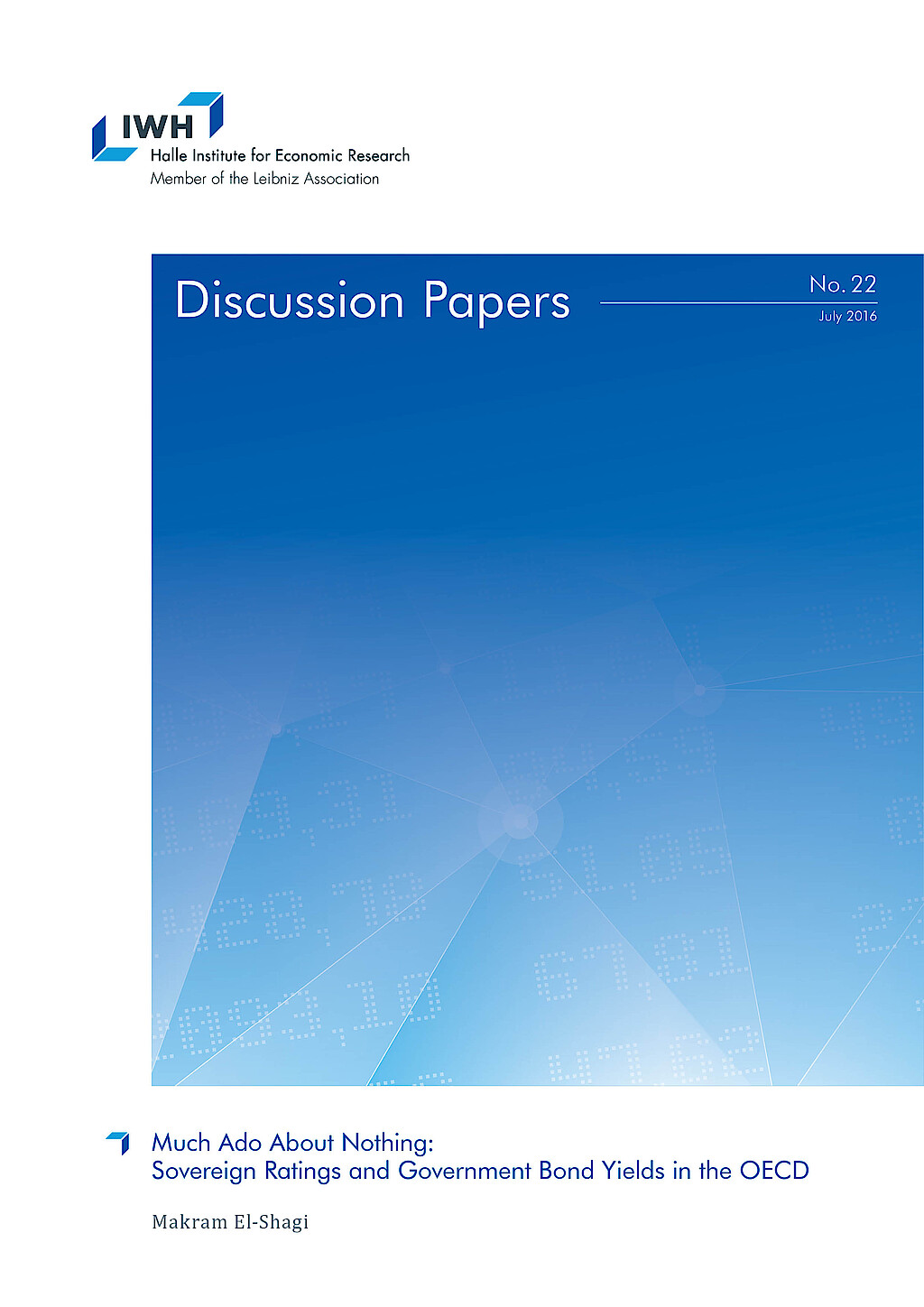Volatilität, Wachstum und Finanzkrisen
Diese Forschungsgruppe analysiert die Entstehung von Instabilitäten im Finanzsystem und die realökonomischen Konsequenzen von Finanzkrisen. Dabei werden kausale Reaktionen gesamtwirtschaftlicher Größen auf makroökonomische Schocks identifiziert. Frühwarnmodelle beschreiben das zyklische Auftreten von Vulnerabilitäten im Finanzsystem.
IWH-Datenprojekt: Financial Stability Indicators in Europe
Forschungscluster
Finanzresilienz und RegulierungIhr Kontakt

- Abteilung Makroökonomik
PROJEKTE
01.2022 ‐ 12.2023
Sovereign Risk Shocks
Deutsche Bundesbank
05.2017 ‐ 09.2019
Frühwarnmodelle für systemische Bankenkrisen: Der Effekt von Modell- und Schätzunsicherheit
Deutsche Forschungsgemeinschaft (DFG)
01.2018 ‐ 12.2018
International Monetary Policy Transmission
Deutsche Bundesbank
Referierte Publikationen

Global Food Prices and Monetary Policy in an Emerging Market Economy: The Case of India
in: Journal of Asian Economics, 2016
Abstract
This paper investigates a perception in the political debates as to what extent poor countries are affected by price movements in the global commodity markets. To test this perception, we use the case of India to establish in a standard SVAR model that global food prices influence aggregate prices and food prices in India. To further analyze these empirical results, we specify a small open economy New-Keynesian model including oil and food prices and estimate it using observed data over the period 1996Q2 to 2013Q2 by applying Bayesian estimation techniques. The results suggest that a big part of the variation in inflation in India is due to cost-push shocks and, mainly during the years 2008 and 2010, also to global food price shocks, after having controlled for exogenous rainfall shocks. We conclude that the inflationary supply shocks (cost-push, oil price, domestic food price and global food price shocks) are important contributors to inflation in India. Since the monetary authority responds to these supply shocks with a higher interest rate which tends to slow growth, this raises concerns about how such output losses can be prevented by reducing exposure to commodity price shocks.

Real Effective Exchange Rate Misalignment in the Euro Area: A Counterfactual Analysis
in: Review of International Economics, Nr. 1, 2016
Abstract
The European debt crisis has revealed severe imbalances within the Euro area, sparking a debate about the magnitude of those imbalances, in particular concerning real effective exchange rate misalignments. We use synthetic matching to construct a counterfactual economy for each member state in order to identify the degree of these misalignments. We find that crisis countries are best described as a combination of advanced and emerging economies. Comparing the actual real effective exchange rate with those of the counterfactuals gives evidence of misalignments before the outbreak of the crisis: all peripheral countries appear strongly and significantly overvalued.

The Diablo 3 Economy: An Agent Based Approach
in: Computational Economics, Nr. 2, 2016
Abstract
Designers of MMOs such as Diablo 3 face economic problems much like policy makers in the real world, e.g. inflation and distributional issues. Solving economic problems through regular updates (patches) became as important to those games as traditional gameplay issues. In this paper we provide an agent framework inspired by the economic features of Diablo 3 and analyze the effect of monetary policy in the game. Our model reproduces a number of features known from the Diablo 3 economy such as a heterogeneous price development, driven almost exclusively by goods of high quality, a highly unequal wealth distribution and strongly decreasing economic mobility. The basic framework presented in this paper is meant as a stepping stone to further research, where our evidence is used to deepen our understanding of the real-world counterparts of such problems. The advantage of our model is that it combines simplicity that is inherent to model economies with a similarly simple observable counterpart (namely the game environment where real agents interact). By matching the dynamics of the game economy we can thus easily verify that our behavioral assumptions are good approximations to reality.

Financial Constraints on Growth: Comparing the Balkans to Other Transition Economies
in: Eastern European Economics, Nr. 4, 2015
Abstract
This article applies an adjusted growth diagnostic approach to identify the currently most binding constraint on financing growth in the West Balkan countries. Since this group of economies faces both structural and systemic transformation problems, the original supply-side approach might not be sufficient to detect the most binding constraint. The results of the analysis indicate that the binding constraint on credit and investment growth in the region is the high and increasing share of nonperforming loans, primarily in the household sector, due to policy failures. This article compares the Balkan countries to a group of advanced transition economies. Single-country and panel regressions indicate that demand-side factors do not play a constraining role on growth in the West Balkan countries, but they do in the advanced transition economies.

Risk and Return - Is there an Unholy Cycle of Ratings and Yields?
in: Economics Letters, 2015
Abstract
After every major financial crisis, the question about the responsibility of the rating agencies resurfaces. Regarding government bonds, the most frequently voiced concern targeted “unreasonably” bad ratings that might trigger capital flights and increasing risk premia which sanction further rating downgrades. In this paper we develop a multivariate, nonparametric version of the Pesaran type cointegration model that allows for nonlinearities, to show that a unique equilibrium between ratings and sovereign yields exists. Therefore, we have to reject the concern that there is an unholy cycle leading to certain default in the long run.
Arbeitspapiere

The Appropriateness of the Macroeconomic Imbalance Procedure for Central and Eastern European Countries
in: IWH Discussion Papers, Nr. 16, 2017
Abstract
The experience of Central and Eastern European countries (CEEC) during the global financial crisis and in the resulting European debt crises has been largely different from that of other European countries. This paper looks at the specifics of the CEEC in recent history and focuses in particular on the appropriateness of the Macroeconomic Imbalances Procedure for this group of countries. In doing so, the macroeconomic situation in the CEEC is highlighted and macroeconomic problems faced by these countries are extracted. The findings are compared to the results of the Macroeconomic Imbalances Procedure of the European Commission. It is shown that while the Macroeconomic Imbalances Procedure correctly identifies some of the problems, it understates or overstates other problems. This is due to the specific construction of the broadened surveillance procedure, which largely disregarded the specifics of catching-up economies.

Inflation Dynamics During the Financial Crisis in Europe: Cross-sectional Identification of Long-run Inflation Expectations
in: IWH Discussion Papers, Nr. 10, 2017
Abstract
We investigate drivers of Euro area inflation dynamics using a panel of regional Phillips curves and identify long-run inflation expectations by exploiting the crosssectional dimension of the data. Our approach simultaneously allows for the inclusion of country-specific inflation and unemployment-gaps, as well as time-varying parameters. Our preferred panel specification outperforms various aggregate, uni- and multivariate unobserved component models in terms of forecast accuracy. We find that declining long-run trend inflation expectations and rising inflation persistence indicate an altered risk of inflation expectations de-anchoring. Lower trend inflation, and persistently negative unemployment-gaps, a slightly increasing Phillips curve slope and the downward pressure of low oil prices mainly explain the low inflation rate during the recent years.

Much Ado About Nothing: Sovereign Ratings and Government Bond Yields in the OECD
in: IWH Discussion Papers, Nr. 22, 2016
Abstract
In this paper, we propose a new method to assess the impact of sovereign ratings on sovereign bond yields. We estimate the impulse response of the interest rate, following a change in the rating. Since ratings are ordinal and moreover extremely persistent, it proves difficult to estimate those impulse response functions using a VAR modeling ratings, yields and other macroeconomic indicators. However, given the highly stochastic nature of the precise timing of ratings, we can treat most rating adjustments as shocks. We thus no longer rely on a VAR for shock identification, making the estimation of the corresponding IRFs well suited for so called local projections – that is estimating impulse response functions through a series of separate direct forecasts over different horizons. Yet, the rare occurrence of ratings makes impulse response functions estimated through that procedure highly sensitive to individual observations, resulting in implausibly volatile impulse responses. We propose an augmentation to restrict jointly estimated local projections in a way that produces economically plausible impulse response functions.

Exit Expectations and Debt Crises in Currency Unions
in: IWH Discussion Papers, Nr. 18, 2015
Abstract
Membership in a currency union is not irreversible. Exit expectations may emerge during sovereign debt crises, because exit allows countries to reduce their liabilities through a currency redenomination. As market participants anticipate this possibility, sovereign debt crises intensify. We establish this formally within a small open economy model of changing policy regimes. The model permits explosive dynamics of debt and sovereign yields inside currency unions and allows us to distinguish between exit expectations and those of an outright default. By estimating the model on Greek data, we quantify the contribution of exit expectations to the crisis dynamics during 2009 to 2012.

Flight Patterns and Yields of European Government Bonds
in: IWH Discussion Papers, Nr. 10, 2013
Abstract
The current European Debt Crisis has led to a reinforced effort to identify the sources of risk and their influence on yields of European Government Bonds. Until now, the potentially nonlinear influence and the theoretical need for interactions reflecting flight-to-quality and flight-to-liquidity has been widely disregarded. I estimate government bond yields of the Euro-12 countries without Luxembourg from May 2003 until December 2011. Using penalized spline regression, I find that the effect of most explanatory variables is highly nonlinear. These nonlinearities, together with flight patterns of flight-to-quality and flight-to-liquidity, can explain the co-movement of bond yields until September 2008 and the huge amount of differentiation during the financial and the European debt crisis without the unnecessary assumption of a structural break. The main effects are credit risk and flight-to-liquidity, while the evidence for the existence of flight-to-quality and liquidity risk (the latter measured by the bid-ask spread and total turnover of bonds) is comparably weak.














